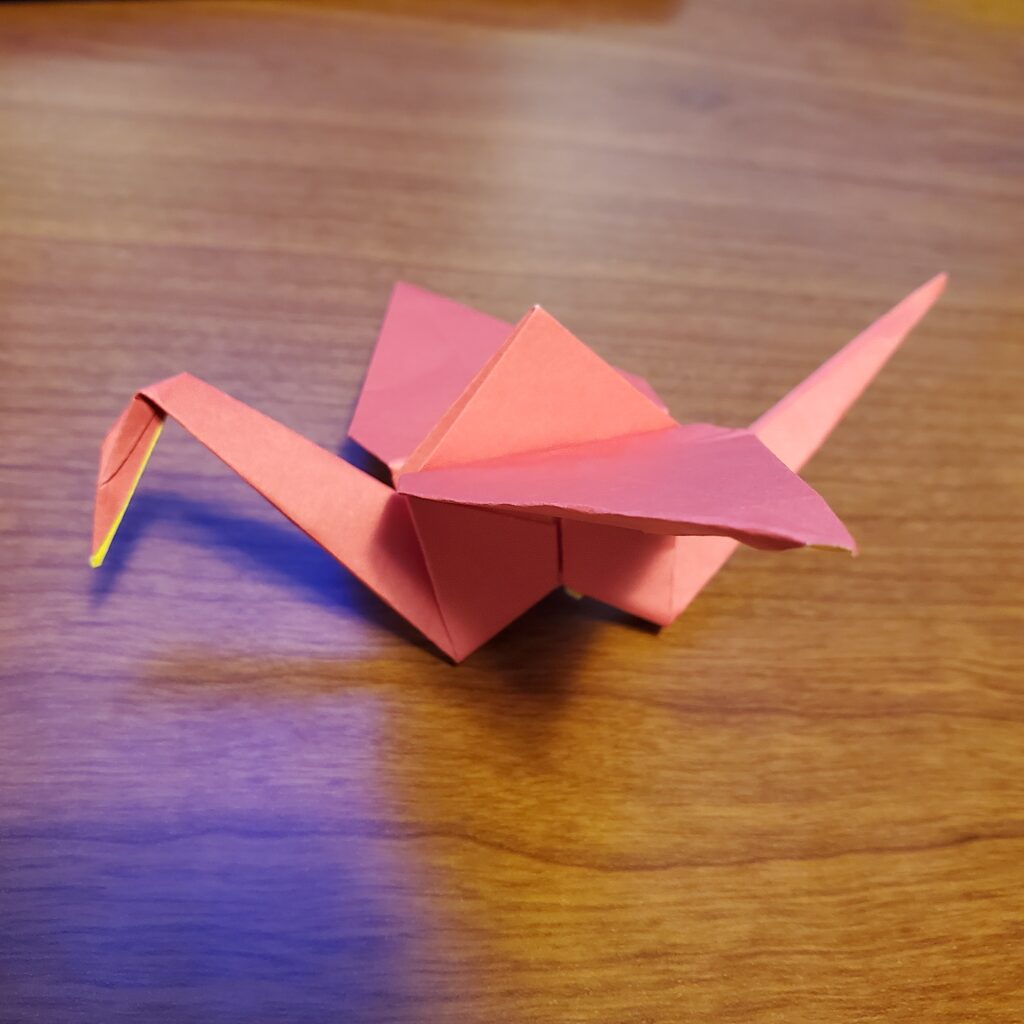For this blog post, I took some time to research one of the more famous historical events involving origami, namely the story of Sadako Sasaki and the one thousand cranes. The following is a ChatGPT-generated summary of her story:
Sadako Sasaki was a Japanese girl who survived the atomic bombing of Hiroshima in 1945 when she was two years old. In 1955, Sadako developed leukemia, which was believed to be a result of the radiation exposure from the bomb. While in the hospital, Sadako heard an old Japanese legend that if a person folded 1,000 origami cranes, they would be granted a wish.
Despite her deteriorating health, Sadako embarked on a mission to fold 1,000 paper cranes, with her wish being for good health and peace. She believed that by completing the cranes, she could overcome her illness. Sadly, Sadako passed away before she could finish, but her classmates and friends completed the remaining cranes in her honor.
The story of Sadako and the 1,000 cranes has become a powerful symbol of peace, hope, and the devastating impact of nuclear war. It has inspired people around the world to create paper cranes as a gesture of solidarity and a plea for a world without nuclear weapons. The Children’s Peace Monument in Hiroshima’s Peace Memorial Park stands in memory of Sadako and other child victims of the atomic bomb, and it is adorned with thousands of origami cranes sent from people worldwide. The legend of the 1,000 cranes continues to be a poignant reminder of the human cost of war and the importance of striving for peace.
For most westerners, the crane is by far the most famous origami figure, largely due to the story of Sadako. Many groups, schools, classes, and individuals continue to create cranes in her memory, often sending them to the Hiroshima Peace Memorial park (https://en.wikipedia.org/wiki/Hiroshima_Peace_Memorial_Park).
Following this research, I took some time to reflect and fold my first origami crane, using a tutorial (https://origami.guide/origami-animals/origami-birds/traditional-origami-crane/) found online. I went through it quite quickly and made a few messy folds, but I figured it would be more authentic to post a picture of the first one I made rather than taking a few practice attempts first. Will I make 1000? No, probably not, but I have huge respect for those with the dedication to accomplish this feat, as well as those who fold cranes in memory of Sadako and the other victims of Hiroshima.
Overall, I have enjoyed learning more about the historical and cultural significance of origami throughout this inquiry project.

Photo: “No Crane No Gain”, Scott Gordon 2023
Leave a Reply
You must be logged in to post a comment.